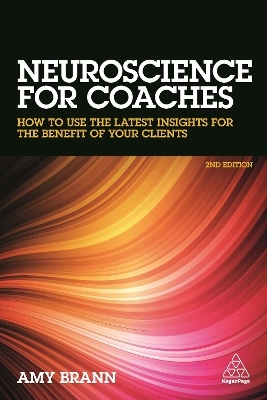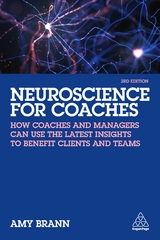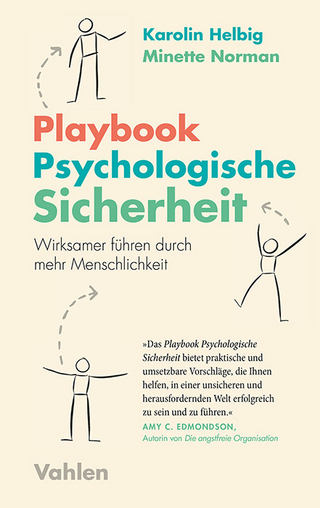
Neuroscience for Coaches
Kogan Page Ltd (Verlag)
978-0-7494-8070-7 (ISBN)
- Titel erscheint in neuer Auflage
- Artikel merken
Many coaching tools and techniques are now fairly well established, but how do they actually work? Answer this questions and start delivering greater value to clients.
Based on over twelve years of research, this book provides a clear explanation of the aspects of neuroscience that are relevant to coaching so you can describe to clients from a neuroscientific perspective why particular techniques and methods work and the benefits to them.
This fully updated 2nd edition of Neuroscience for Coaches includes new interviews with Marshall Goldsmith, Susan Grandfield, Christian van Nieuwerburgh and Kim Morgan, along with new material on oxytocin, goals and mindfulness.
It covers the latest neuroscientific research and, crucially, the ways in which coaches can use this information effectively and practically in their everyday work. Neuroscience for Coaches is a vital resource for keeping up to date with recent scientific developments, tools and techniques in coaching.
Through her UK business Synaptic Potential, Amy Brann works with companies around the world to help them better understand their teams, clients and organizations as a whole. She spent years as a lead coach in Europe and is the author of Make Your Brain Work, also published by Kogan Page.
Section - ONE: Brain Areas;
Chapter - 01: Prefrontal Cortex;
Chapter - 02: Basal Ganglia;
Chapter - 03: Striatum and Nucleus Accumbens;
Chapter - 04: Insular Cortex;
Chapter - 05: Amygdala;
Chapter - 06: Anterior Cingulate Cortex;
Chapter - 07: Hypothalamus;
Chapter - 08: Hippocampus;
Section - TWO: Brain Chemicals;
Chapter - 09: Cortisol;
Chapter - 10: Dopamine;
Chapter - 11: Oxytocin;
Chapter - 12: Adrenaline;
Chapter - 13: Serotonin;
Chapter - 14: GABA and Glutamate;
Section - THREE: Foundational Brain Concepts;
Chapter - 15: Neurons and Synapses;
Chapter - 16: Neuroplasticity;
Chapter - 17: Threat Response;
Chapter - 18: Neuroimaging;
Chapter - 19: Working Memory;
Chapter - 20: HPA Axis;
Chapter - 21: Mirror Neurons;
Section - FOUR: Brain Networks;
Chapter - 22: Brain Networks;
Section - FIVE: The Quantum Brain;
Chapter - 23: The Quantum Brain;
Section - SIX: Neuroscience of Classic Coaching Areas;
Chapter - 24: Self-Control/Willpower;
Chapter - 25: Habits;
Chapter - 26: Optimism;
Chapter - 27: Goals;
Chapter - 28: Mindfulness;
Chapter - 29: Flow;
Chapter - 30: Motivation;
Chapter - 31: Decision Making;
Chapter - 32: Expectations;
Chapter - 33: Beliefs;
Section - SEVEN: Neuroscience of Not-So-Classic Coaching Areas;
Chapter - 34: Choice Architecture;
Chapter - 35: False Memory;
Chapter - 36: Trust;
Chapter - 37: Fairness;
Chapter - 38: Loneliness
| Erscheinungsdatum | 24.08.2017 |
|---|---|
| Verlagsort | London |
| Sprache | englisch |
| Maße | 156 x 235 mm |
| Gewicht | 350 g |
| Themenwelt | Geisteswissenschaften ► Psychologie ► Arbeits- und Organisationspsychologie |
| Naturwissenschaften ► Biologie ► Humanbiologie | |
| Naturwissenschaften ► Biologie ► Zoologie | |
| Wirtschaft ► Betriebswirtschaft / Management ► Personalwesen | |
| ISBN-10 | 0-7494-8070-X / 074948070X |
| ISBN-13 | 978-0-7494-8070-7 / 9780749480707 |
| Zustand | Neuware |
| Informationen gemäß Produktsicherheitsverordnung (GPSR) | |
| Haben Sie eine Frage zum Produkt? |
aus dem Bereich



